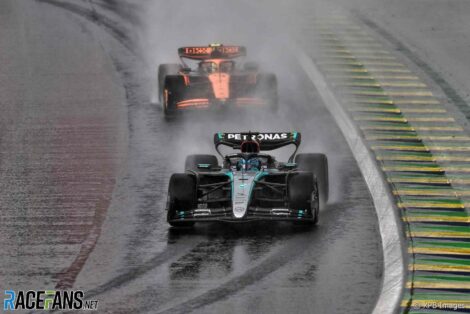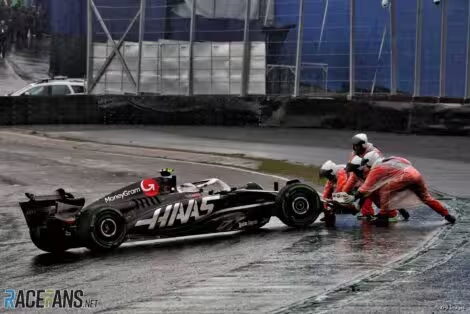A dejected Lando Norris rued his misfortune after seeing his championship hopes all but ruined in the Interlagos rain.
From the McLaren driver’s perspective, he’d taken the effective lead of the race by passing George Russell when the conditions deteriorated, shortly after the pair pitted for fresh sets of intermediate tyres.
But ahead of them lay three drivers who had not taken fresh rubber. Soon afterwards the race was red-flagged, they were able to replace their worn tyres, and the trio annexed the podium.
Had they been merely lucky, as Norris claimed afterwards, or had McLaren and Mercedes blown their drivers’ chances to win with needless pit stops?
Even looking only at this pivotal moment in the race, and ignoring the other errors which cost him places, Norris’ is only partly correct in his assessment. Verstappen and the Alpine drivers were fortunate, but not simply because of the fact the red flag was shown.
What really made the difference was the timing of the Virtual Safety Car period. This was the moment fortune smiled on the podium trio, but also where McLaren and Mercedes made race-losing errors.
The rain was already worsening when Nico Hulkenberg skidded off at turn one on lap 27. The Haas driver had the misfortune to become perched on a ridge, and couldn’t drive away. The marshals therefore had to enter the track to recover his car, which meant the Virtual Safety Car was needed.
Advert | Become a RaceFans supporter and
Teams are always alert to the opportunities VSC periods and conventional Safety Car deployments offer to make pit stops while losing less time than they would during green flag running. Pitting under normal conditions costs around 21 seconds at Interlagos, doing so in neutralised conditions around half that.

But pitting under a VSC is potentially much riskier than doing so when the Safety Car is coming out. Once a Safety Car period is declared, teams know they will have the chance to complete a pit stop before the race resumes. VSC periods can be much shorter, as was the case at Interlagos, and that was what caught out Russell and Norris.
When the VSC period began on lap 28, race leader Russell had already passed the pit lane entrance with Norris close behind. So had Esteban Ocon, who was almost 13 seconds behind in third, followed by Yuki Tsunoda and Verstappen. The second Alpine of Pierre Gasly…
Click Here to Read the Full Original Article at RaceFans…

